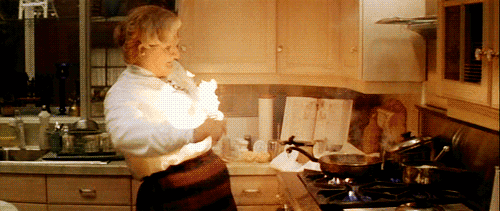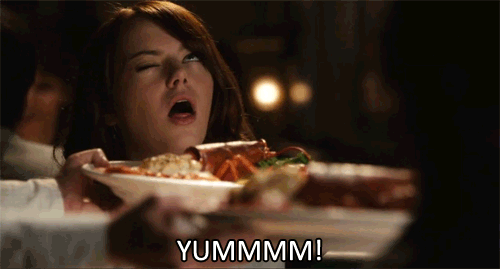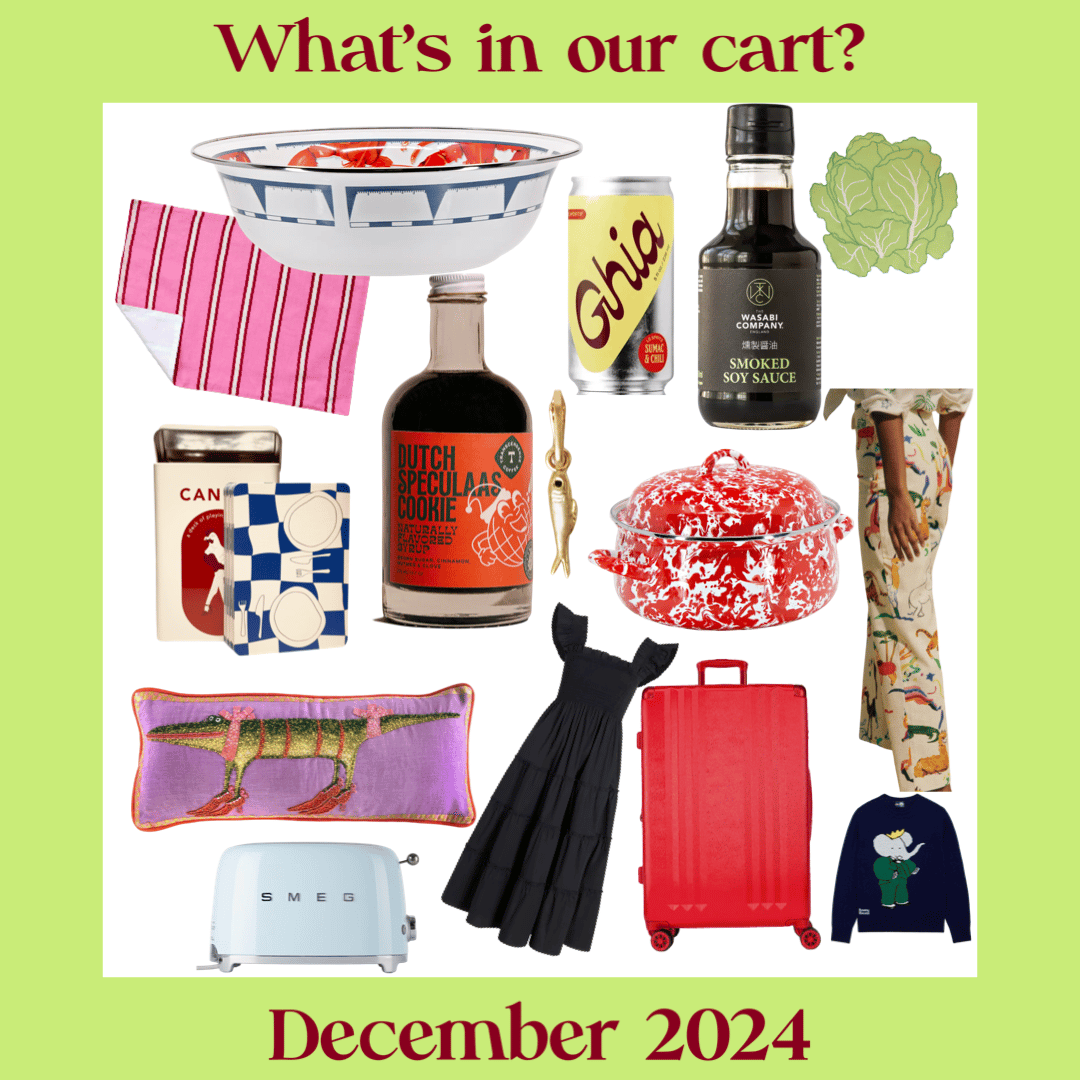- Family Style by Pepper
- Posts
- Grandma-Approved Cooking Hacks that Will Save You Hours in the Kitchen
Grandma-Approved Cooking Hacks that Will Save You Hours in the Kitchen
& how to make your food look *really* pretty

I often find myself wondering where grandmothers learn their superpowers—if there is some school or training camp and if not, at what age do grannies inherit the ability to do things like “whip up” perfect multi-course meals without a measuring cup or timer and how they always smell like tuberose, dove bars, and sugar cookies.

After spending Thanksgiving weekend with 5 of my family's Grandmas, Nanis, and Dadis (mine prefers to be called Babushka or Grandmama, so one of those as well), I’ve learned three key things—
Their superpowers are infinite, often make me tear up with love, pride, and admiration, and will never cease to amaze me
The culinary magic is, in fact, learnable over time (assorted grandmothers sprinkling tips into our Thursday preparations gave me a taste of that)
And all grandmothers smell the same. Like comfort and home cooking….even if the wooden spoon itself has been handed down a generation.
In today’s newsletter we're diving into why those old-school cooking tips, hacks, and techniques were surprisingly precise, how to master them, the physics behind why we "eat with our eyes" first (thank you, evolution), and how medieval feasts created modern food porn.

ICYMI, my name’s Saanya Ali and I’m the founder of SOIRÉE, a platform, supper club, newsletter, and social community dedicated to reviving the “lost art of entertaining” and making food, and the culture around it, FUN…as it should be. Follow along on TikTok, and Instagram for more video deep dives!
The math and science behind pretty food
The science of why we "eat with our eyes first" goes far deeper than Instagram aesthetics. When we look at food, our brains process visual information through multiple pathways simultaneously.
The ventral visual pathway evaluates color and form
The dorsal stream assesses spatial relationships and movement
The limbic system triggers emotional responses based on past experiences
The hypothalamus begins preparing our digestive system for food
But why?
Picture this: You're at that one friend's house and she presents you with a plate that looks like it should be in the Louvre. Meanwhile, your attempt at "rustic plating" at home looks more "crime scene" than "cottagecore." But here's the thing—there's actual science behind why some plates look Instagram-ready and others look like they were styled by a hungry toddler. It all comes down to physics and visual weight distribution.
Our brains release dopamine before we take a single bite. This isn't just modern psychology – it's evolutionary biology. Our ancestors needed to quickly assess whether food was safe and nutritious. Bright colors often signaled vital nutrients, while dull or grey colors might indicate spoilage.
How?
It actually has to do with The Golden Ratio—the mathematical principle that appears everywhere from nautilus shells to the Parthenon. It also applies to food plating. When chefs place items according to this ratio, it creates what's called "dynamic symmetry" – a balance that feels natural because it mimics patterns found throughout nature. Objects arranged according to this ratio (approximately 1:1.618) are inherently more pleasing to our brains.

History 101: Aesthetics have always mattered
This obsession with pretty food isn't new. In medieval times, nobles would serve roasted peacocks re-dressed in their own feathers just for the drama of it all. They were truly the OG food influencers.
The evolution of plating through history kind of reads like a who's who of showing off. But it goes one step further than just glamor and validation. What is prioritized tells us as much about society as it does about cuisine—
Ancient Rome (1st-4th century CE)
In Ancient Rome, foods were often served separated by type. Presentation was focused on abundance rather than arrangement, color was added through edible flowers and saffron, and status was shown through exotic ingredients rather than plating techniques.
Medieval Period (5th-15th century)
This era was defined by—"Look how many different animals I can stuff inside other animals!" They also developed techniques for serving meat in its original form (i.e. a cockatrice was a half-pig, half-rooster), used gold leaf and food coloring extensively, and emphasized vertical presentation with towering displays.
Renaissance (14th-17th century)
These years brought symmetry and proportion to plating and introduced the concept of courses served in sequence. The stars of the show were often sugar sculpture centerpieces and optical illusions that were created with food.
French Revolution & Classical French Cuisine (18th-19th century)
The French established service à la russe (serving dishes in sequence) and codified plating techniques and garnish rules. Everything had to be precise and by the book, but they also wanted their food to look like food and for the ingredients themselves to shine. This is why they also introduced white space in plating and developed the concept of sauce presentation.
Nouvelle Cuisine (1960s-1970s)
More modern times emphasized minimalism in plating. Like the aforementioned white space, negative space as a design element was introduced and chefs focused on natural presentations, reduced portion sizes, and sauce quantities.
Modern Era (1990s-Present)
The past 30 or so years have seen a notable move towards molecular gastronomy techniques and an emphasis on texture and height. Everything is created and plated with an eye towards the camera. What sort of abstract plating concepts and unique presentations will read best in the photo?
What’s next?
Personally, these are a few of the trends in food styling, plating, and photography that I’ve been seeing, reading about, and hearing about recently—
Color Theory
Complementary colors create visual vibration
Warm colors appear to advance, cool colors recede
Green garnishes enhance most dishes due to evolutionary preferences
Color triads create maximum visual impact
2. Thoughtful Composition
Leading lines direct eye movement
Rule of thirds for focal point placement
Odd numbers of elements create dynamic tension
Negative space frames and highlights
3. Mix it up
Multiple levels of height and dimension create visual interest
45-degree angle is optimal for photography
Gen Z loves grain and a close up or something really far away with lots of visual context
Layering creates depth perception
Play with textures—smooth v. rough, wet v. dry, soft v. harsh, etc.

20 Traditional Kitchen Measurements & Techniques that Grandmas Have Been Using for Years
Speaking of history, how is it that our grandmothers and our grandmothers grandmothers always seem to be able to cook without any of the tools and timers that we rely on so heavily today? How can they tell when a cake is done by the smell and that a sauce was ready "when it coats the back of a wooden spoon?" It’s all actually less “old wives tale” and more physics.
Here’s your ultimate CHEAT SHEET—
1. The Spoon Test to know when a sauce is ready
"Coats the back of a spoon" – When a sauce is thick enough to leave a clear line when you run your finger across the back of a coated spoon (approximately 82°C/180°F)
2. The Palm Test for Steak Doneness
Rare: Soft part of palm when fingers are relaxed
Medium-rare: Soft part when thumb touches index finger
Medium: Thumb touches middle finger
Medium-well: Thumb touches ring finger
Well-done: Thumb touches pinky
3. Rice Water Measurement
First knuckle method: Place finger tip on top of rice, water should reach first knuckle.
4. Pasta Portioning
One serving of spaghetti equals the diameter of a quarter when bunched
5. Salt Measurement
"Three-finger pinch" between thumb, index, and middle finger equals approximately 1/4 teaspoon
6. Oil Temperature Tests
A wooden chopstick bubbles slowly: 320-350°F
Bubbles vigorously: 350-375°F
Bubbles very aggressively: Over 375°F
7. Bread Kneading Time
"As long as it takes to sing happy birthday eight times" (approximately 8 minutes)
8. Dumpling Wrapper Thickness
"Thin as paper, thick as glass" (about 1mm)
9. Pizza Dough Stretch Test
Should be thin enough to read newspaper through it
10. Whipped Cream Peaks
"Soft peaks" should fold over like a bird's beak
11. Bean Soaking
"Until the skin wrinkles like your grandmother's hands" (approximately 8 hours)
12. Bread Proofing
"Double in size and bounces back slowly when poked"
13. Jam Setting Point
"Wrinkles when pushed with finger on a cold plate"
14. Pickle Brine Strength
"Floats an egg" (approximately 10% salt solution)
15. Dough Hydration
"Tacky like a Post-it note, not sticky like tape"

These traditional measurements developed over centuries of cooking, and modern science has proven their accuracy. The "first knuckle" rice measurement, for example, naturally accounts for the volume expansion ratio of most medium-grain rice varieties. Moral of the story…grandma always knows best.
Eat healthier. Live better.
Save hours planning, shopping, and cooking like millions of other Americans already shopping with Hungryroot.
Healthier and tastier customized meal plans mean you can achieve your goals on your terms. More veggies? Less sodium? Hungryroot has you covered.
Not sure where to start? Take the quick and easy quiz to get customized recommendations you'll love. Hungryroot is even throwing one free item plus 30% off your 1st delivery if you take the quiz today.
Top shopping picks of the week
Golden Rabbit Lobster Bowl, Mosey Me Striped Placemats, Ghia Chili Sumac Mocktail, Wasabi Company Smoked Soy Sauce, Tuckernuck Cabbage Placemats, Candid Card Game, Transcendence Speculaas Cookie Coffee Syrup, Clare V Sardine Charm, Golden Rabbit Dutch Oven, MacKenzie Childs Alligator Pillow, Hill House Home Ellie Nap Dress, Smeg Toaster, Calpak Red Suitcase, Sezane Trousers, Rowing Blazers Babar Sweater.
Reply with an ingredient, topic, or recipe you want to see in the newsletter for a chance to be featured in the next one! See you next week!
xx,
Saanya


